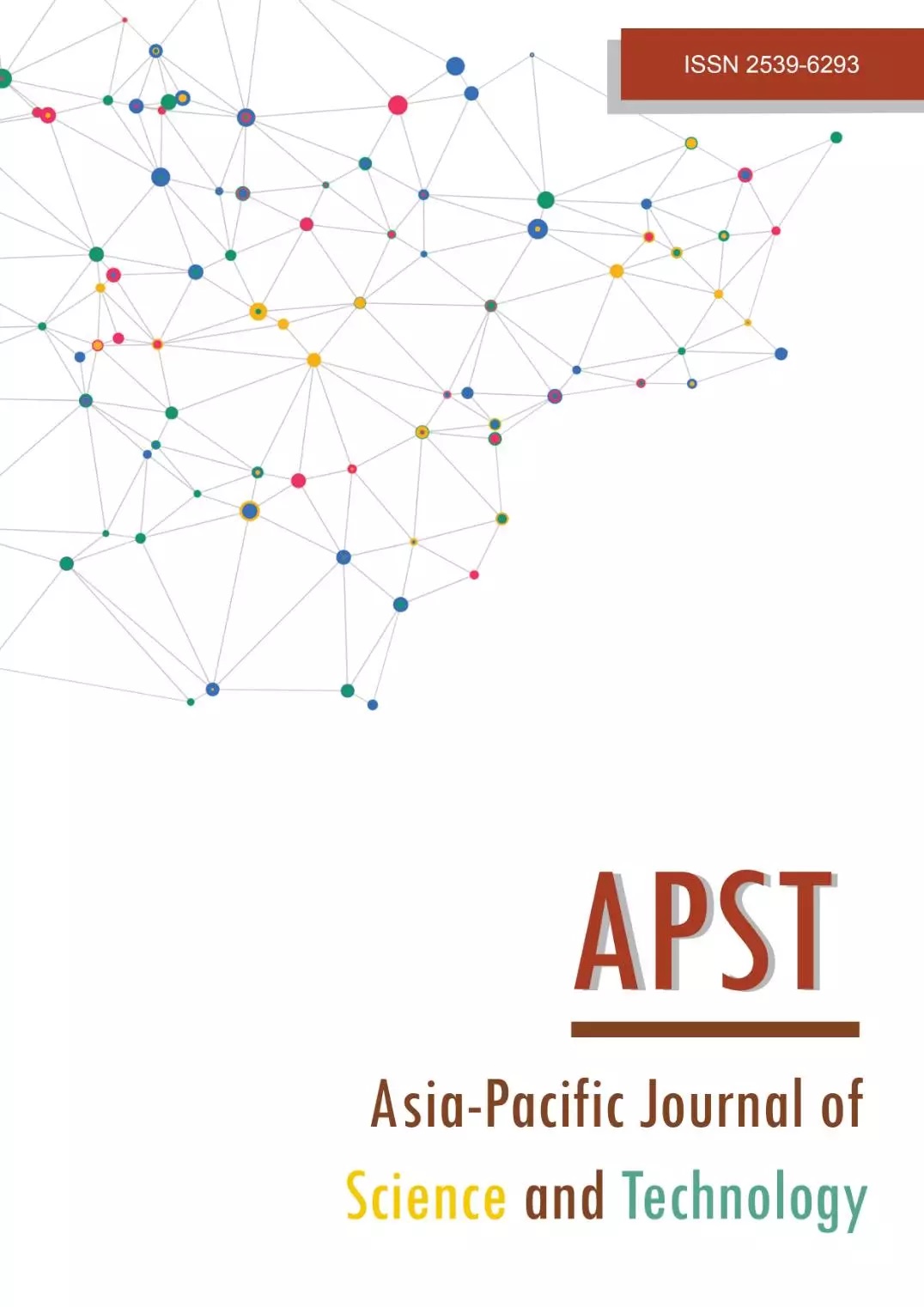A cost-effective approach for producing carbon composite by altering the fiber architecture and hybridization
Main Article Content
Abstract
Carbon composites have been used in high-performance applications like automotive, marine, civil engineering, and many more. But due to their high cost, researchers have focused their efforts on the development of sustainable carbon composites. In various applications, the material is loaded in a specific direction, and higher strength is needed in that direction. So, in the other direction, the material which provides the needed performance for the product with less cost can be substituted. This cost-effectiveness of composite is attained by the hybridization approach. For this study, carbon composite is considered, wherein the loading direction carbon yarn has been taken whereas it has been substituted with high density polyethylene (HDPE) flat yarn for cost reduction in other direction. Hand lay-up technique is used to prepare carbon-HDPE epoxy hybrid composites. Mechanical properties: tensile, flexural & impact, and physical properties like density and fiber volume fraction were studied. Assessment of performance and comparison of mechanical properties of composites with varying fiber architecture viz. plain, twill, and sateen, is done by taking stacking sequence as constant. A comparison has been established between these composites and metals like steel and aluminium by their specific strength. It is observed that it exhibits satisfactory specific strength in the direction of load. It displays high tensile stress, flexural strength, and impact strength. Comparison with carbon composites showed analogous values in the loading direction. Thus, cost-effective and functionally beneficial hybrid composite materials can be developed by incorporating the suitable hybridization, layering sequence, and architecture of the fabric.
Article Details

This work is licensed under a Creative Commons Attribution-NonCommercial-NoDerivatives 4.0 International License.
References
Hagnell MK, Akermo M. A composite cost model for the aeronautical industry: Methodology and case study. Compos B Eng. 2015;79:254-261.
Agrawal SA, Bhattacharya SS. Textile reinforced structure: a review. Int J Eng Res Appl. 2017;7(07):84-86.
Agrawal SA. To study the physical and mechanical properties of textile composite laminates produced by Orienting fabric layers differently [dissertation]. Gujarat: The Maharaja Sayajirao University of Baroda; 2016.
Agrawal SA. Mechanical performance of woven carbon reinforced epoxy composites with varied orientation angle. J Metals Mater Miner. 2021;31:82-87.
Behera B, Dash B, Bibhu M. An experimental investigation into the mechanical behaviour of 3D woven fabrics for structural composites. Fibers Polym. 2014;15:1950-1955.
Tavares R, Melro A, Camanho P, Marques A, Novoa P. Hybridization of composite systems. In: Araujo AL, Correia JR, Soares CMM, editors. The 10th International Conference on Composite Science and Technology ICCST/10; 2015 Sept 2-4; Lisbon, Portugal. Lisbon; IDMEC; 2015. p. 205.
Murugan N, Ramanujam R, Sriram G. Investigation on static and dynamic mechanical properties of epoxy based woven fabric glass/carbon hybrid composite laminates. Procedia Eng. 2014;97:459-468.
Marwa R. Impact performance of hybrid laminated composites with statistical analysis. Iran Polym J. 2018;27:445-459.
Acikbas G, Ozcan S. Production and characterization of a hybrid polymer matrix composite. Polym Compos. 2017;39(11):4081-4093.
Sudarshan NR, Bhanu HN, Rajendra N. Strength characteristics of HDPE concrete. Int J Res Eng Technol. 2015;4:340-346.
Horrocks AR, Anand SC. Handbook of technical textiles. 1st ed. Cambridge: Woodhead Publishing ltd.; 2000.
Industrial Textile Associates [Internet]. South Carolina: The Association; c2013 [cited 16 Oct 2022]. High performance and high-temperature resistant fibers emphasis on protective clothing. Available from: http://www.intexa.com/downloads/hightemp.pdf.
Fernando GF, Grimes CA. Fatigue behaviour of hybrid composites - part 1 carbon/kevlar hybrids. J Mater Sci. 1988;23:3732-3743.
Allameh SM, Shokrieh MM, Kordkheili HY. Tensile strength of notched woven fabric hybrid glass, carbon/epoxy composite laminates. J Ind Text. 2014; 43:383-395.
Pegoretti A, Fambri L, Zucchelli A, Migliaresi C. Intraply and interply hybrid composites based on Eglass and poly (vinyl alcohol) woven fabrics: tensile and impact properties. Polym Int. 2004; 53:1290-1297.
Thomas S, Kalaprasad G, Joseph K. Influence of short glass fiber addition on the mechanical properties of sisal reinforced low density polyethylene composites. J Compos Mater. 1997;31:509-527.
Thomas S, John MJ, Varughese KT. Green composites from natural fibers and natural rubber: effect of fiber ratio on mechanical and swelling characteristics. J Nat Fibers. 2008;5:47-60.
Farsani RE, Kordkheili HY, Karimi M. Influence of thermal conditions on the tensile properties of basalt fiber reinforced polypropylene-clay nanocomposites. Material and Design. 2014;53:540-549.
Ozturk S. The effect of fiber content on the mechanical properties of hemp and basalt fiber reinforced phenol formaldehyde composites. J Mater Sci. 2005;40:4585-4592.
Nosraty H, Fotouhi M, Shakeri M. Intraply hybrid composites based on basalt and nylon woven fabrics: Tensile and compressive properties. Iran J Mater Sci Eng. 2015;12:1-11.
Czigany T. Special manufacturing and characteristics of basalt fibers reinforced hybrid polypropylene composites: mechanical properties and acoustic emission study. Compos Sci Technol. 2006;66:3210-3220.
Saiman MP, Wahab MS, Wahit MU. The effect of fabric weave on tensile strength of woven kenaf reinforced unsaturated polyester composite. In: Ahmad MR, Yahya MF, editors. International Colloquium on Textile Engineering, Fashion, Apparel and Design (ICTEFAD 2014); 2014 Apr 7-8; Penang, Malaysia. Singapore: Springer; 2014. p. 25-29.
Sevkat E, Liaw B, Delale F, Raju BB. Drop-weight impact of plain-woven hybrid glass graphite/toughened epoxy composites. Compos A Appl Sci. 2009;40(8):1090-1110.
Pathank RK, Patel S, Gupta VK. Efficient design of Kevlar/basalt hybrid composite laminates under ballistic impact. Adv Compos Mater. 2023;32(1):48-69.
Agrawal SA. Weaving of high-performance technical fabrics. Man-Made Text India. 2021;46(10)351-353.
Agrawal SA. Simplified measurement of density of irregular shaped composites material using Archimedes principle by mixing two fluids having different densities. IRJET. 2021;8(3):1005-1009.
Hegde A, Darshan RS, Mulla F, Shoeb M, Rajanish M. Tensile properties of unidirectional glass/epoxy composites at different orientations of fibres. IJERA. 2015;5:150-153.
Karahan M, Karahan N. Influence of weaving structure and hybridization on the tensile properties of woven carbon-epoxy composites. J Reinf Plast Compos. 2014;33(2):212-222.
Mark HF, editor. Encyclopedia of polymer science and technology. 3rd ed. New Jersey: WILEY; 2004.


